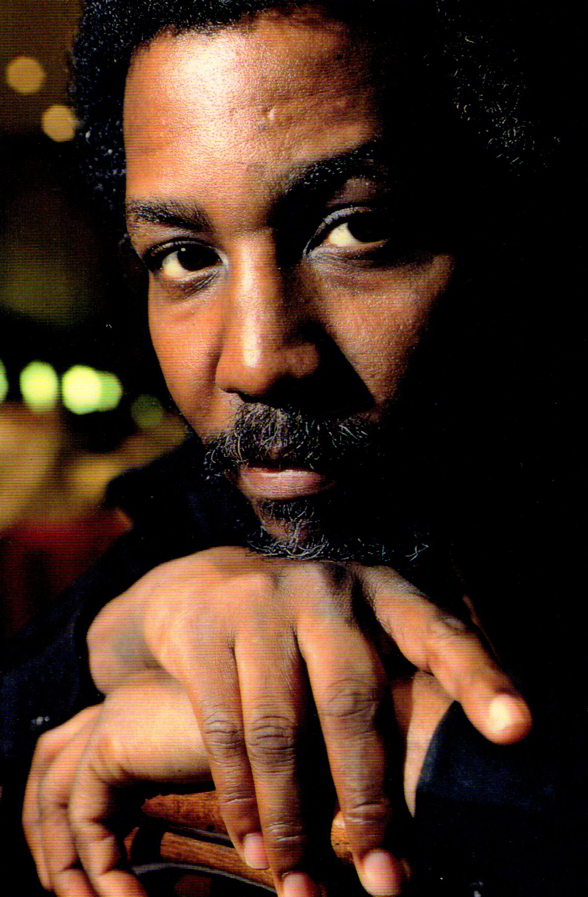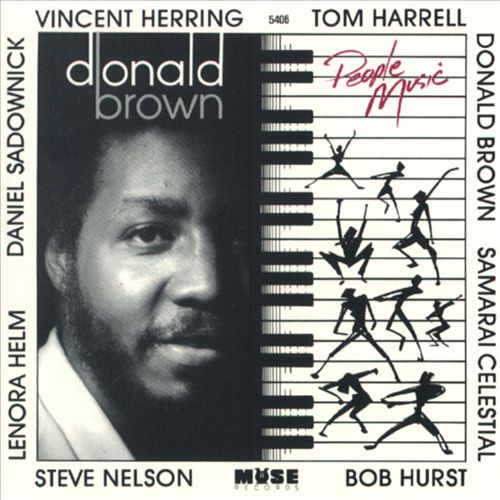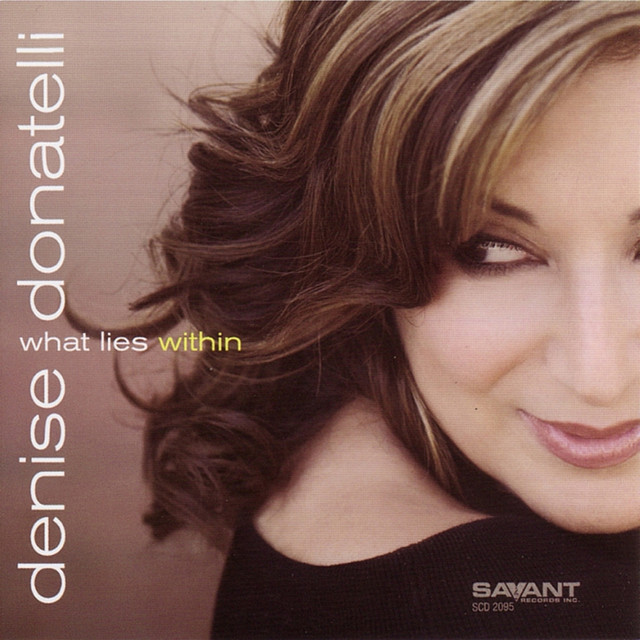I Love It When You Dance That Way (vocal) – Donald Brown
This bright, catchy samba has been recorded quite a few times at a variety of tempos, both instrumentally and vocally. The two vocal recordings have a rather different different feel and different endings.
- Recording: Donald Brown - People Music
- Recorded on: March 19 & 21, 1990
- Label: Muse (MCD 5406)
- Concert Key: No key center
- Vocal Range: Alto, G3 to F4
- Style: Latin (Samba)
- Vocals - Lenora Helm
- Flugelhorn - Tom Harrell
- Flute - Vincent Herring
- Vibes - Steve Nelson
- Piano - Donald Brown
- Bass - Robert Hurst
- Drums, Vocals - Eric Walker
- Percussion - Daniel Sadownick
Video
- Description
- Historical Notes
- Solos
- Piano Corner
- Bass Corner
- Drum Corner
- Guitar Corner
- Inside & Beyond
- Minus You
Donald Brown's original recording features both instrumental and vocal melody choruses. Our audio excerpt for the vocal version begins with the last two measures of the instrumental melody which set up the vocal melody. The excerpt ends with the same measures on the vocal chorus, which are played instrumentally before the vocalists return to hum the melody as a background for the piano solo. There is no lyric on the last two measures of the melody; it's indicated "hum or instrumental" on the lead sheet.
Catchy and flowing with a bright vibe, this song has the feel of a standard—though not without a bit of a challenge. The uneven form is 37 measures long, divided into an 18-measure section and a similar 19-measure section. These are labeled on our lead sheets as A1 and A2, as the first 13 measures are identical.
This song has a cyclical form, resolving back at the end to the beginning of the next chorus. The recordings of this song show different ways to deal with the ending. On this first version, the out melody repeats and fades out; this is shown on our lead sheets as "ending: vamp and fade melody", with the first note of the melody shown to continue the phrase.
Another challenge in this song, at least for vocalists, is the melodic range. At almost two octaves, it is very difficult to sing keeping the lowest and highest notes. On this recording, the two singers avoid the low G on beat 4 of the fourth measure, replacing it with B a third higher. The horns and vibes still play G here.
Because there is no key center, our vocal lead sheets, which are still transposed for different singers' ranges, are indicated by the first chord.
On this recording the melody is played first instrumentally, then sung by the two vocalists in octaves; the horns and vibes double the vocals. The last two measures are played instrumentally in this chorus. This is followed by a piano solo chorus with wordless vocal melody as a background almost throughout (except the last two measures). After the vocal out head with the second lyric (same format as the vocal in head), there is another chorus of wordless vocal melody, doubled by the flute with flugelhorn and vibes improvising together over it. This chorus is repeated and fades out.
Catchy and flowing with a bright vibe, this song has the feel of a standard—though not without a bit of a challenge. The uneven form is 37 measures long, divided into an 18-measure section and a similar 19-measure section. These are labeled on our lead sheets as A1 and A2, as the first 13 measures are identical.
This song has a cyclical form, resolving back at the end to the beginning of the next chorus. The recordings of this song show different ways to deal with the ending. On this first version, the out melody repeats and fades out; this is shown on our lead sheets as "ending: vamp and fade melody", with the first note of the melody shown to continue the phrase.
Another challenge in this song, at least for vocalists, is the melodic range. At almost two octaves, it is very difficult to sing keeping the lowest and highest notes. On this recording, the two singers avoid the low G on beat 4 of the fourth measure, replacing it with B a third higher. The horns and vibes still play G here.
Because there is no key center, our vocal lead sheets, which are still transposed for different singers' ranges, are indicated by the first chord.
On this recording the melody is played first instrumentally, then sung by the two vocalists in octaves; the horns and vibes double the vocals. The last two measures are played instrumentally in this chorus. This is followed by a piano solo chorus with wordless vocal melody as a background almost throughout (except the last two measures). After the vocal out head with the second lyric (same format as the vocal in head), there is another chorus of wordless vocal melody, doubled by the flute with flugelhorn and vibes improvising together over it. This chorus is repeated and fades out.
Donald Brown's fourth album as a leader, "People Music" was the first of his to feature vocals, though only on this song. Lenora Helm also sang on Donald's next album, "Cause And Effect," a year later; she has also recorded with Antonio Hart and pianist Dona Carter. The other vocalist on this song is the drummer Eric Walker; this seems to be his only vocal recording. Walker is best known for his work in Sun Ra's Arkestra; in this band he used the name Samarai Celestial, which is how he is credited on the cover of "People Music."
Related Songs
Email Send I Love It When You Dance That Way (vocal) to a friend
Send this page to a friend via email. Add your name or email in the first field. In the second, add one or more email addresses, separated by a comma.
- Recording: Denise Donatelli - What Lies Within
- Recorded on: July 21-23, 2007
- Label: Savant (SCD 2095)
- Concert Key: No key center
- Vocal Range: Alto, D-sharp3 to B-flat4
- Style: Latin (Bossa)
- Vocals - Denise Donatelli
- Flugelhorn - Carl Saunders
- Alto Sax - Bob Sheppard
- Guitar - Peter Sprague
- Piano - Geoffrey Keezer
- Bass - Hamilton Price
- Drums - Marvin "Smitty" Smith
- Percussion - Alex Acuna
Video
- Description
- Historical Notes
- Solos
- Piano Corner
- Bass Corner
- Drum Corner
- Guitar Corner
- Inside & Beyond
- Minus You
This recording is at a slower samba tempo. After a rhythm section intro, the horns play A2 of the melody followed by the vocal chorus; our audio excerpt begins with the last two measures of the instrumental melody to set up the vocal.
Denise Donatelli sings this song a fifth lower than the original recording; our vocal lead sheet in her key is labeled after the first chord, Cm7. She gets around the low-note problems in a different way than the vocalists on the first recording. The low C on the fourth beat of the fourth measure is replaced with C an octave up. On the fourth beat of the eighth measure, the low E♭ is replaced with G in the same way that the first version's low G is changed to B. These changes extend to the horn melody; they are indicated in the lead sheet.
On A2 of the in melody chorus, the flugelhorn doubles the vocal melody. Denise hums the wordless last two measures of the melody chorus, leading to a final note (F) at the downbeat of the first solo. She adds a wordless vocal background, a simplified version of the melody, at A2 of the piano solo chorus. The vocal out melody is doubled by the alto sax for A1 and both horns on A2. The ending goes to a vamp and fade on Dmaj7, as shown in our lead sheet.
Denise Donatelli sings this song a fifth lower than the original recording; our vocal lead sheet in her key is labeled after the first chord, Cm7. She gets around the low-note problems in a different way than the vocalists on the first recording. The low C on the fourth beat of the fourth measure is replaced with C an octave up. On the fourth beat of the eighth measure, the low E♭ is replaced with G in the same way that the first version's low G is changed to B. These changes extend to the horn melody; they are indicated in the lead sheet.
On A2 of the in melody chorus, the flugelhorn doubles the vocal melody. Denise hums the wordless last two measures of the melody chorus, leading to a final note (F) at the downbeat of the first solo. She adds a wordless vocal background, a simplified version of the melody, at A2 of the piano solo chorus. The vocal out melody is doubled by the alto sax for A1 and both horns on A2. The ending goes to a vamp and fade on Dmaj7, as shown in our lead sheet.
This song is available in the Sing Jazz! book, available from music dealers. "What Lies Within" is Denise Donatelli's second album, and her first with Geoffrey Keezer. In 2007 Keezer also recorded with vocalist Dianne Reeves.
Related Songs
Email Send I Love It When You Dance That Way (vocal) to a friend
Send this page to a friend via email. Add your name or email in the first field. In the second, add one or more email addresses, separated by a comma.

Donald Brown
born on March 28, 1954
A lyrical pianist and prolific composer as well as a teacher, band leader and arranger, Donald Brown is considered one of the masters of contemporary jazz composition. Raised in Memphis, Tennessee, Donald studied trumpet and drums as a youth. It was not until he began studying at Memphis State University that he switched to piano as his primary instrument, the late start making his pianistic skill all the more incredible. Read more...
There was a problem.
...


